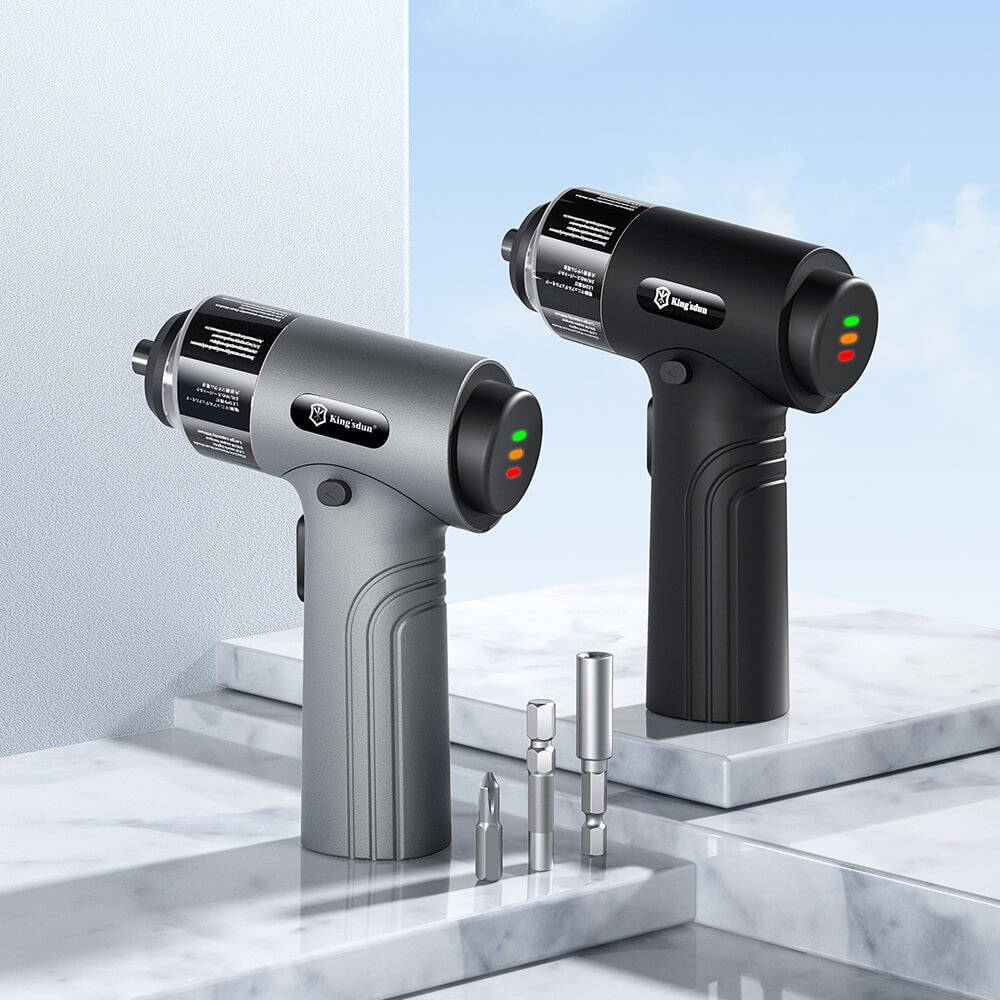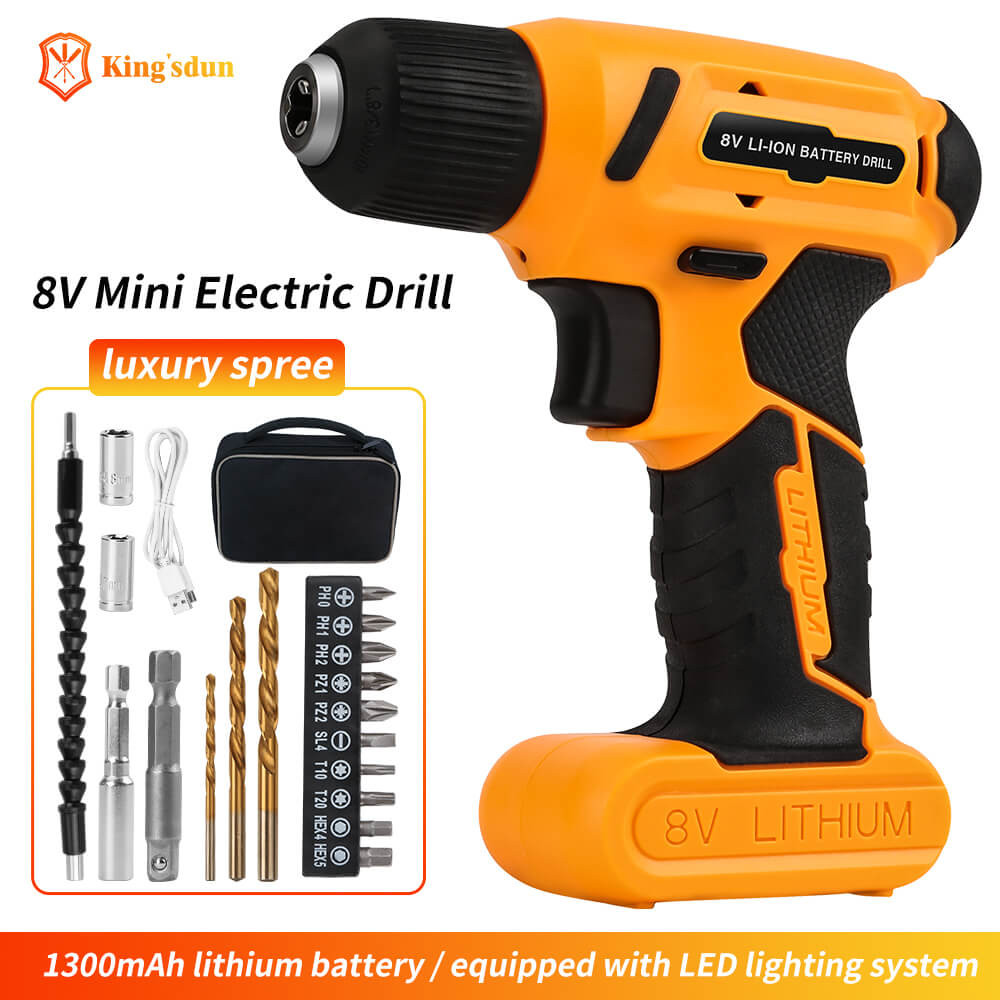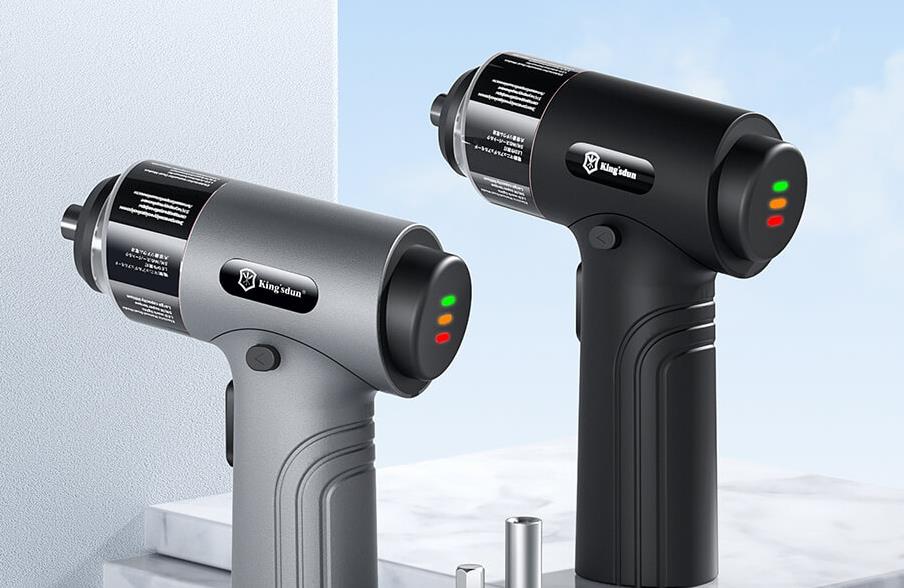Cordless drills and electric screwdrivers are a staple in most toolboxes. What’s the difference between these, and which one should you use? Can they be used interchangeably?

Difference Between Cordless Drill and Screwdriver
A drill is a versatile power that can be used for drilling holes, driving fasteners, polishing etc., whereas an electric screwdriver is primarily used for driving screws.
The main difference between a cordless drill and a screwdriver is that the drill has a chuck for holding the bits, while cordless screwdrivers have hexagonal sockets that accept ¼-inch driver bits. The electric screwdriver comes with a torque limiter and runs at a slower speed compared to a drill.

1. Drill Chuck vs. Socket
A cordless drillusually has a chuck, which opens and closes to hold onto drill bits, driver bits, and other related tools. Although the self-centering 3-jaw chuck works best for the round shank, it can also hold hex shank driver bits. This increases the drill’s versatility since it can hold various drill bits, paint stirring paddles, and any other tool that fits into the chuck. This means that your cordless drill can be used to drill holes, stir paint, sand materials, and many other tasks.
The functionality is usually limited by the drill’s size. If the drill is exceptionally large, you can’t use it in small spaces.
In contrast, the electric screwdriver typically has a quick-change socket, limiting its use to hexagonal shank driver bits (usually ¼ inch in size). a set of drill bits that are usually purchased with the drill. This means that the screwdriver cannot be used for any task other than driving screws. Note that it is far better than using a manual screwdriver. While it’s not as versatile as the cordless drill, it is far smaller and thus more suited to working in small spaces.
The advantage of the socket design in the power screwdriver is the easy removal of driver bits.
2. Functions
Cordless drills are versatile and can be used for many jobs. These include drilling holes, installing screws, polishing, sanding, mixing paint, and even cleaning drains if you have the correct attachments. They pack a bit more punch than electrical screwdrivers and can thus be used on various types of material.
Cordless drills tend to be heavy, though, and may require a two-handed operation. They also won’t fit into tight spaces.
Electric screwdrivers are small and lightweight and are designed for the sole purpose of driving screws. They’re well-suited to work in confined spaces, at odd angles, and can be operated with one hand. They’re not very versatile, though, since they’re only suitable for driving fasteners, nothing else.
Can I Use a Drill as a Screwdriver?
Yes. Most cordless drills have a drive mode that turns the drill into a screwdriver with a clutch the controls the toque. Make sure that you switch to the drive mode when you use the drill as screwdriver to avoid cam-out of screw head sockets.
3. Torque
Cordless drills typically deliver higher torque than electric screwdrivers since they’re meant for more demanding jobs. Generally, cordless drills have far higher power ratings with a higher battery voltage, ranging from 12V to 24V. Electric screwdrivers have a lower battery voltage, ranging from 4V to 10V.
While an electric drill can function as a screwdriver, it’s not always the best option. If your drill doesn’t have the proper settings, it can strip screw heads or break them off completely. Both of these are bad since you’ll have difficulty removing that screw. So, if you want to use your electric drill as a screwdriver, check the settings before you buy it.
Here’s why an electric screwdriver won’t break off screws, but drills might: electric screwdrivers have a torque limiting clutch, which prevents the head from rotating after reaching a set amount of torque. This means that the screwdriver senses when your screw is tight and thus stops turning. Not all handheld drills (especially corded models) have a clutch and will rotate even after the screw is tight. The screw’s head will experience too much torque and, thus, be ripped off.
That said, most of the branded cordless drills available in the market today come with a clutch system. Look for the ones with numbers marked around the drill chuck.
However, neither the cordless drill nor the electric screwdriver commands the same power as a stationary drill pressor the driving force of an impact driver. Still, they will cut through most household materials.
4. Speed
The drills are designed to run faster, usually 1500 RPM and above, since drilling small holes require high spindle speed. On the other hand, a typical battery-operated screwdriver spins at a much lower speed, usually in the range of 0 – 400 RPM. This gives you better control over the tool when driving fasteners.
A good quality cordless drill with driver mode will have variable speeds and different torque settings which will allow you to adjust the output force according to the type of screw and the material into which you are driving the screw into.
Can You Use an Electric Screwdriver as a Drill?
An electric screwdriver can be used for drilling small pilot holes in last, wood, aluminum, and other soft metals with one caveat. You will need a drill bit with a hexagonal shank which is not very common.
Also, most cordless screwdrivers are not equipped with very high speed and hence will be slow at drilling.
5. Size
This is where screwdrivers really shine. Drills are usually bulky when compared to power screw drivers. The large diameter chuck makes it difficult to reach tight spots and their bulky size and handle design are not suitable for small delicate jobs.
On the other hand, electric screwdrivers tend to be relatively small. The socket-type tool holding design makes it really compact. They are easy to maneuver in tight spaces and usually fit onto a standard tool belt.
Power screwdrivers typically can work with smaller driver bits than cordless drills. You can get screwdrivers with a straight handle or ones that can transform the straight handle to pistol-grip. They are thus better suited to smaller projects, such as assembly in electrical circuit boxes. Most models are adapted to slanted drive heads, offering greater mobility under challenging angles.
6. Weight
Cordless drills are typically much larger and heavier than electric screwdrivers. This governs what they are used for – cordless drills are typically used for more demanding jobs, such as drilling large holes, mixing paint, etc. They come in many sizes, ranging from a typical small hand tool to a hefty model you hoist onto your shoulder. Conversely, cordless screwdrivers are used for lighter jobs, such as installing screws.
Cordless drills might be mobile since they’re not limited by the proximity of an electrical outlet. Still, they’re not always small tools that you can attach to your tool belt. These handy gadgets are pretty heavy and require a bit of muscle if you operate them for a long time. You also can’t operate them all day long, one-handed since they’re far too hefty for that.
Suppose you’re suffering from arthritis or lack grip strength. In that case, the electric screwdriver is an excellent option to use due to its small size and lightweight. Certain medical conditions make handling the weight of a cordless drill prohibitive.
7. Battery
Both cordless drills and cordless screwdrivers typically use a lithium-ion battery. These are compact and can be recharged multiple times. Two crucial aspects to consider when choosing either tool are the voltage and ampere-hour ratings. The voltage (V) governs the tool’s power output. The ampere-hour (AH) indicates how long the battery will operate on one charge cycle. The greater the voltage, the more power the tool delivers. The greater the ampere-hour, the longer the battery will last during operation.
Another factor to consider is the battery’s location. Most electric screwdrivers have onboard batteries. This means that the entire tool must be connected to the charger to recharge the battery. Conversely, most cordless drills have external batteries. Here, the battery can be swapped with a fully charged one while the first is charging. In this way, your work won’t be interrupted by charge cycles.
While this may seem like a major plus to the drills, keep in mind that the battery-operated screwdrivers can run much longer with a single charge since they usually have motors that require less power consumption.
Some smaller electric screwdrivers can also be powered by standard AA batteries, eliminating recharge. If you’re using the tool extensively, we recommend using rechargeables here since these batteries can be costly.
8. Price
Electric screwdrivers are typically far less expensive than cordless drills. However, they’re only suitable for one job, so by opting for the less expensive option, you forego the versatility of their cordless drill cousins.
The one you choose depends on the task at hand. If all you need to do, is the occasional furniture assembly, the electrical screwdriver should meet your needs. The cordless drill is your answer if you need anything more versatile or powerful.
Kingsdun is a precision screwdriver manufacturer, if you are looking for a Chinese screwdriver manufacturer, please contact us, we will give you the most sincere advice, thank you
